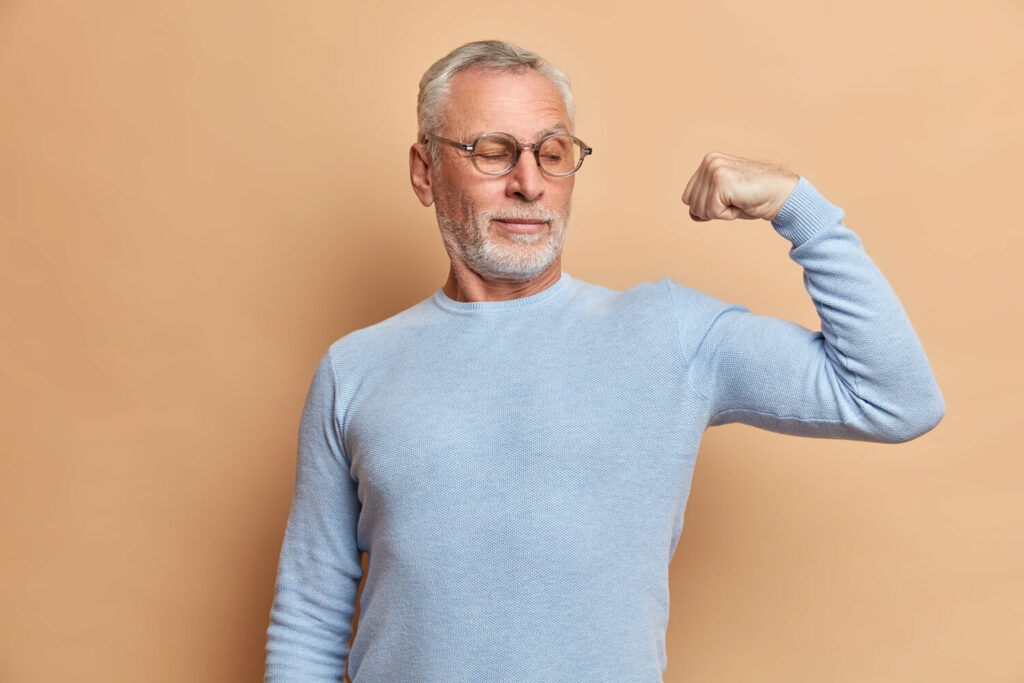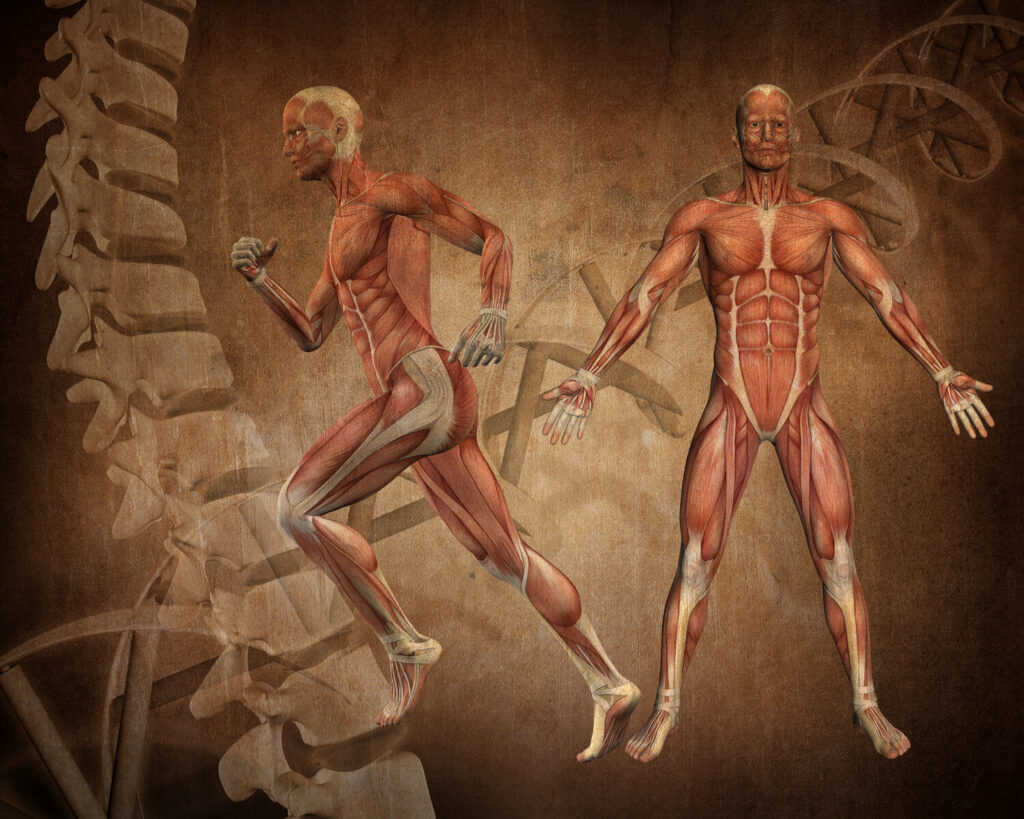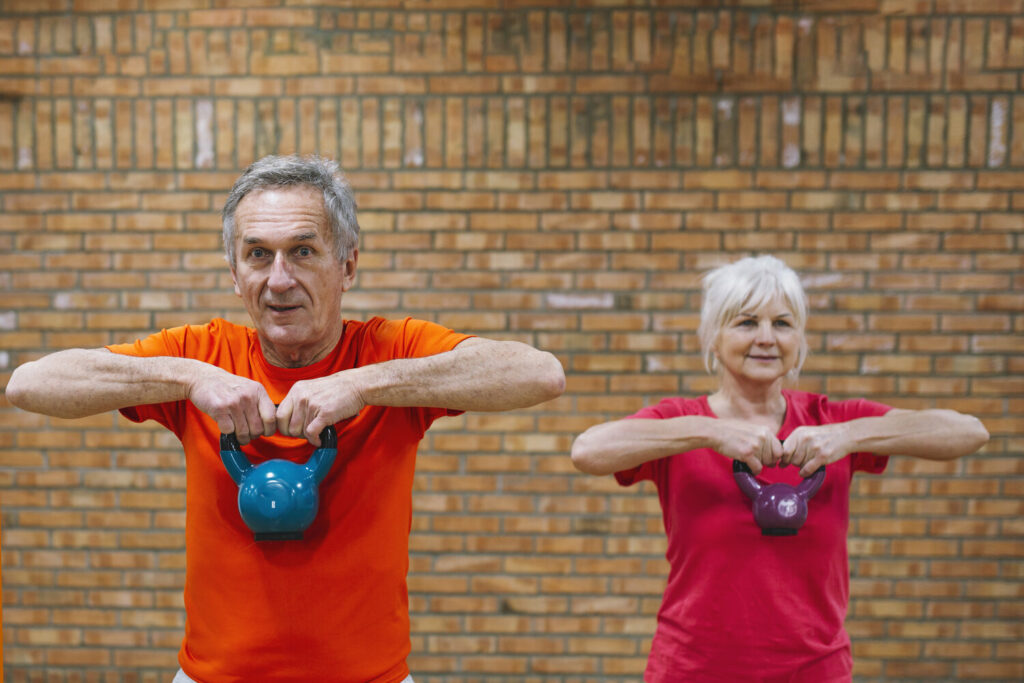Strength Training Can Reverse Aging
“We do not stop playing because we are old, we grow old because we stop playing
– George Bernard Shaw – Irish playwright and political activist.
Aging Happens
While one’s definition or perception of aging may differ, we all can agree, things change within our body and it’s not usually for the best. Growing older seems to involve an inevitable loss of strength, energy, and vigour, but it need not be so. The frailty and decreased energy we associate with aging, such as difficulty walking for distances, climbing stairs, or carrying groceries, are largely due to muscle loss. This muscle loss results mainly from inactivity. The old saying is true when it comes to muscle: “Use it or lose it.”
A number of studies, two of which are HERE and HERE show this loss of muscle mass starts at a younger age than many think. Generally, people lose about 1% of their lean muscle mass per year after the age of 40 leading to a decrease in strength and power. On average, people lose about 30% of their strength between the ages 50-70, and another 30% of what’s left per decade after that. WOW
But it is important to remember that it is not the aging process in and of itself that causes the decline in strength but the lack of muscle use.

Strength Training: The Anti-Aging Secret
Without question, the most powerful solution we have at our disposal in our battle with Father Time is strength training. The results we need to age successfully are all about the pursuit and production of increased strength.
If individuals stress their muscles and remain active as they age, the loss of physical capabilities and independence could be thwarted. Regular physical activity is a good strategy to attenuate age-related decay of muscle structure and function. But this activity must be at a higher intensity level than most of the aging population train at.

Muscle Structure
We need to have a look at the structure of skeletal muscle a little closer in order to explain why the intensity of training is important.
Muscles are made up of 2 types of fibres.
-
Type I fibre is also known as slow-twitch have endurance capabilities, are less prone to fatigue and are involved in low load activities such as sitting, standing, walking and jogging.
-
Type II muscle fibre known as fast-twitch produces fast, strong, powerful muscle contractions. They are used in short bursts of activity and fatigue more quickly.
This article HERE is one of many that indicates the loss of muscle fibre related to age appears to exclusively involve type II fibres and it begins at around 40 years of age. This loss of type II fibres largely explains the greater loss in power and strength that occurs during aging. It is the force-producing fast-twitch fibres that decrease in number and size with age.
However, as we age the general population tends to train primarily for endurance, rather than strength training. Activities such as walking, jogging, swimming, cycling, gardening, golf……that are performed over a longer period at a lower intensity are the activities of choice. Although these do have some benefits, they involve the use of type I muscle fibres which are less resistant to the natural aging process.
Strength training, high intensity or speed work selectively develops the fast-twitch type II fibre size, therefore weight training and speed work exercise programmes are most beneficial to preserve the loss of muscle as we get older.
So, the potential for strength training lies in its ability to rejuvenate and rebuild the bigger and more powerful Type II fibres and help reduce the natural effects of aging. The amazing thing is that this potential can be unleashed with very brief, infrequent, and most importantly, in a very safe way.
The results from numerous studies show that a properly designed resistance training program can induce dramatic and substantial increases in muscle strength, size, and function in frail men and women up to 96 years of age.

So How Much And How Often?
It is recommended by a large number of studies, two of which can be found HERE and HERE that a properly designed resistance training program for older adults should include an individualised, periodised approach working toward 2–3 sets of 1–2 multipoint exercises per major muscle group. Inlay terms you must be doing big movements that involve a large proportion of the body such as squats and deadlifts. You can drop the exercises that only work isolated areas such as bicep curls or sidearm raises.
The weight that you lift must be at sufficient loads (greater than 80% 1 Rep Max, i.e. lifting 80% of the maximum weight you can lift once) over 2-3 sets. Each set should consist of 6-8 repetitions. In summary you should be doing exercises:
-
That involve working large parts of the body at once
-
2-3 sets of each exercise with a weight greater than 80% of 1RM
-
Each set consisting of 6-8 repetitions
-
2-3 x a week
Unless you are a gym bunny and are used to lifting weights It would be advised that you initially see a certified strength and conditioning instructor, physiotherapist, or personal trainer to help you set exercises that will be most beneficial for you. For further reading about resistance training have a look at our BLOG: What is strength training?
Most of our clients usually visit our physiotherapy clinic because they are in pain or physically inhibited in some way. We then work together with the client to get them better and back into daily life, work, exercise, and/or sport.
We can, however, work towards the prevention of injury and help guide you towards a degree of athleticism, and halt and even reverse the adverse effects of aging. If you would like to discuss any of the above and/or any other issues that you have, then please take us up on our free 15-minute online consultation where you can discuss these issues with one of our specialist physiotherapists.
We are here for you
If you’re in pain and would like to talk to us about getting some help, some specialist advice, or if you are looking for a diagnosis, remember we are always here to help you.
Appointments remain limited and we are experiencing an exceptionally high demand for our physio services since UK restrictions were lifted, so please contact us immediately to avoid a long wait.
If you would like to get one of our limited slots, please click HERE to email or CALL us on 07900603617.






